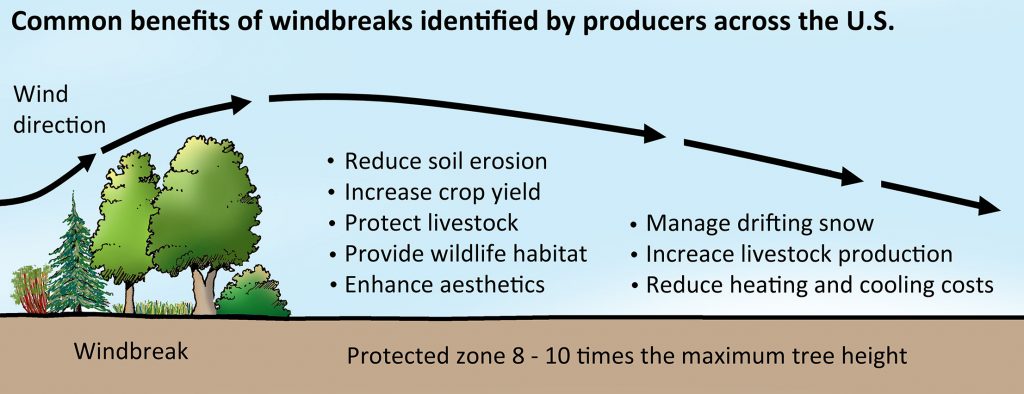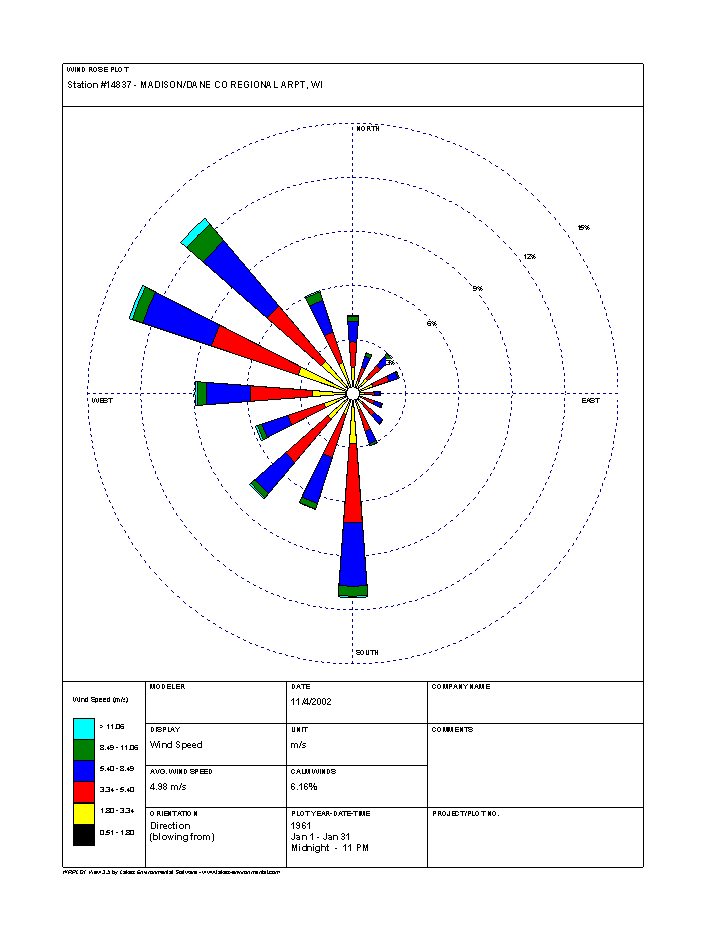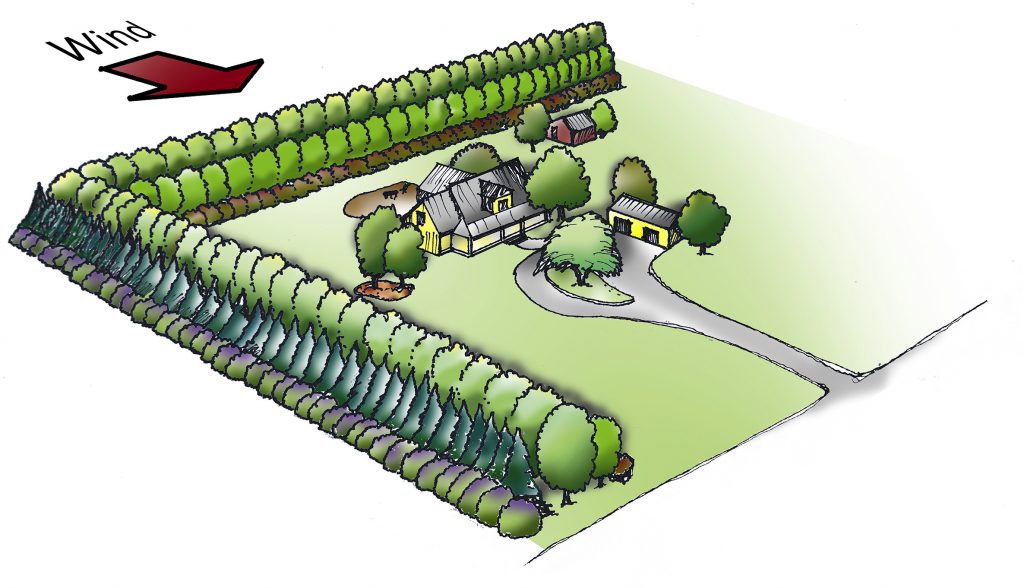I regularly have conversations with farmers, foresters, and family woodland owners who have misconceptions about agroforestry. I get it because agroforestry consists of many different practices which aren’t applicable to every situation. When I attempt to simplify the subject, I say agroforestry is just a fancy word for incorporating trees in agricultural landscapes. However, I insist that the principles behind it are useful for any landowner to understand.
To outline my point, let’s look at windbreaks as an example, one of the most adaptable agroforestry practices. But, if you’d like more background before getting into specifics, I encourage you to check out this earlier post titled ‘An Introduction to Agroforestry.’
Why Windbreaks?
A windbreak, also called a shelter belt, is a planting of one or more rows of trees or shrubs that provides protection from the wind. Using plants to act as living barriers is an old idea that can be modified to serve different purposes on almost any property. Whether you’re trying to shelter structures, block snow from roadways, protect crops in the garden, or make your land more hospitable to wildlife, it’s worth considering installing a windbreak.

When properly planned, planted, and maintained, windbreaks have numerous economic and environmental benefits. Windbreaks can provide summer shade and block wind year-round to reduce energy use. They can include plants that provide fruit or nuts for people and wildlife, and flowering species to help support pollinators. If you’re interested in aesthetics, selecting plants with colorful stems and foliage can improve the beauty of your property in every season.
Additionally, in the flat topography found throughout much of Wisconsin, windbreaks add three-dimensional structure to the landscape. This structure can act as noise and visual screens and create micro-climates that improve habitat diversity. Micro-climates are small areas that differ in temperature and exposure to wind, light, and moisture. Increasing the variety of conditions on your property expands the diversity of species it can support, whether they’re wildlife, agricultural, or horticultural.
Planning Your Windbreak
Windbreaks work best when they consist of several rows of plants with different growth patterns. When choosing species and planting layout, it’s important to consider the plants potential height and density. Those factors help determine the necessary plant spacing and overall windbreak length and width. This species guide from the USDA will help you select the right balance of species to create an effective windbreak.
Some great native plants from Wisconsin to consider including are hazelnut, highbush cranberry, serviceberry, elderberry, wild plum, aspen, dogwoods, cedars, oaks, and white spruce.

If your new to your land, it may be worthwhile to consult a local wind rose (example shows average wind speeds on a compass rose) to help align the windbreak perpendicular to prevailing winds. Just remember it’s critical that the design fits your needs and the local landscape, because windbreaks are not a cut and paste practice.

When planning a windbreak, it’s a good idea to talk with your county’s service forester about your property and species selection. They can help with the layout and provide tips for site preparation and planting best practices. Windbreaks may require maintenance after planting as well, like watering, weeding, and pruning. After establishment, it’s a good idea to continue monitoring plant health in an on-going basis, which your forester can help with too.
Recognizing all the benefits of living windbreaks, the USDA has included them as one of the core agroforestry practices in Wisconsin. Under the right circumstances, this makes them eligible for cost-share and technical assistance programs. Contact your local USDA service center to learn more. Even if you’re not eligible for their programs, the USDAs technical standards are a great guide for the decisions you’ll have to make if you think a windbreak is right for your land.
Agroforestry Reconsidered
I hope this overview of windbreaks gets you to think again about how agroforestry can help you get more from your land. If your interested, I encourage you to check out this website from the USDA’s Nation Agroforestry Center that covers everything you need to get started with agroforestry on your property.
